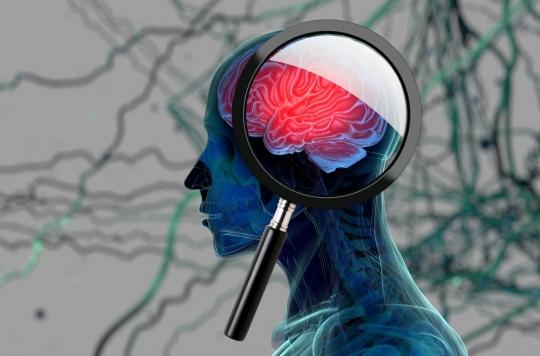While we now know that Alzheimer’s disease manifests itself because of the formation of amyloid plaques in the brain, American researchers have established an interesting link with cholesterol.

Today in the world, 50 million people live with Alzheimer’s disease. In the United States, it is considered that a person develops the disease every 65 seconds. With, eventually, problems of memory, thinking and behavior.
More than a hundred years ago, Alois Alzheimer, a German psychiatrist, discovered for the first time the presence of senile plaques in the brain of a patient suffering from the disease. This first step then led to the discovery of an amyloid precursor protein, forming deposits and plaques in the brain. These plaques are believed to be the culprits of brain degeneration and Alzheimer’s disease. Since then, a number of studies have looked at this amyloid precursor protein, but the way it settles on neurons and its function remain unclear.
Alzheimer’s disease is linked to cholesterol
Researchers from the Brain Institute at Florida Atlantic University (United States) tried to answer a question: is the amyloid precursor protein the brain behind Alzheimer’s disease, or rather a simple accomplice? The results of their study are published in the journal Neurobiology of Disease.
The starting point of their work is an observation: Alzheimer’s disease is linked to genetics. Generally, the most common genetic risk factor is a protein involved in cholesterol transport, not the amyloid precursor protein. Additionally, some clinical trials have attempted to treat Alzheimer’s disease by reducing the formation of amyloid plaques and these have failed.
If cholesterol is harmful to health when there is too much of it in the blood, it plays a crucial role in the brain. It allows the connection between neurons, which is necessary for memory and learning. However, when there is too much, it could also promote Alzheimer’s disease.
Amyloid precursor protein causes cholesterol deficiency
Thus, the researchers deliberately disrupted the interaction between cholesterol and the amyloid precursor protein. They found that surprisingly, by disengaging the two, this manipulation disrupted the flow of amyloid-bound protein, but also impaired the distribution of cholesterol on the surface of neurons. Neurons with intentionally altered cholesterol distribution showed swollen synapses, fragmented axons, and other signs of neurodegeneration.
“Our study is intriguing because we have noticed a particular association between the amyloid precursor protein and cholesterol, which resides in the cell membrane of synapses. These form the contact points between neurons and the biological basis of the learning and memory,” said Qi Zhang, lead author of the study. He continues, “The amyloid precursor protein may well be one of many accomplices contributing in part to cholesterol deficiency. Strangely, the heart and brain seem to collide in the fight against bad cholesterol.” Thus, the amyloid precursor protein would therefore have an effect on the synapses, which would subsequently trigger brain degeneration.

.

















